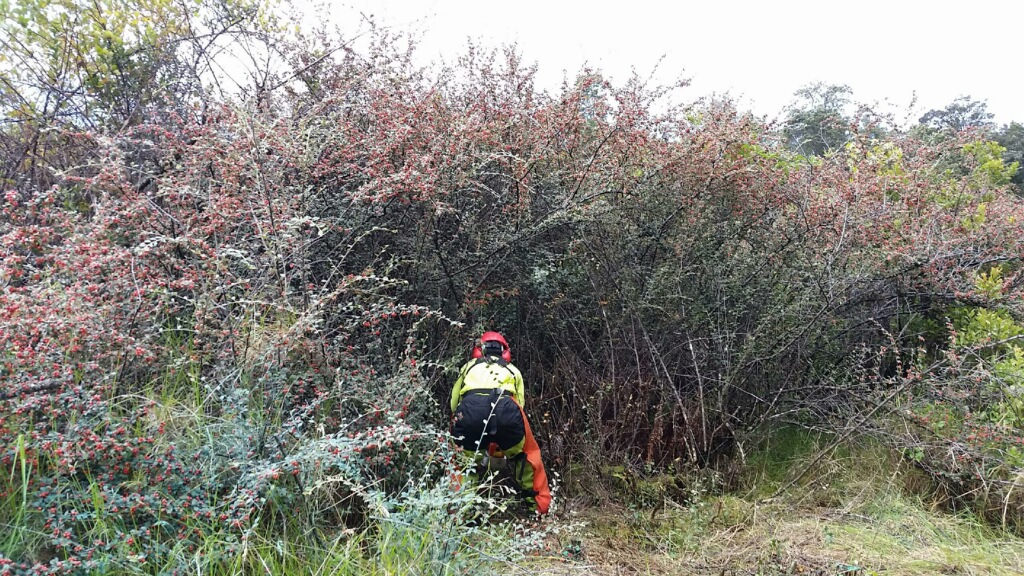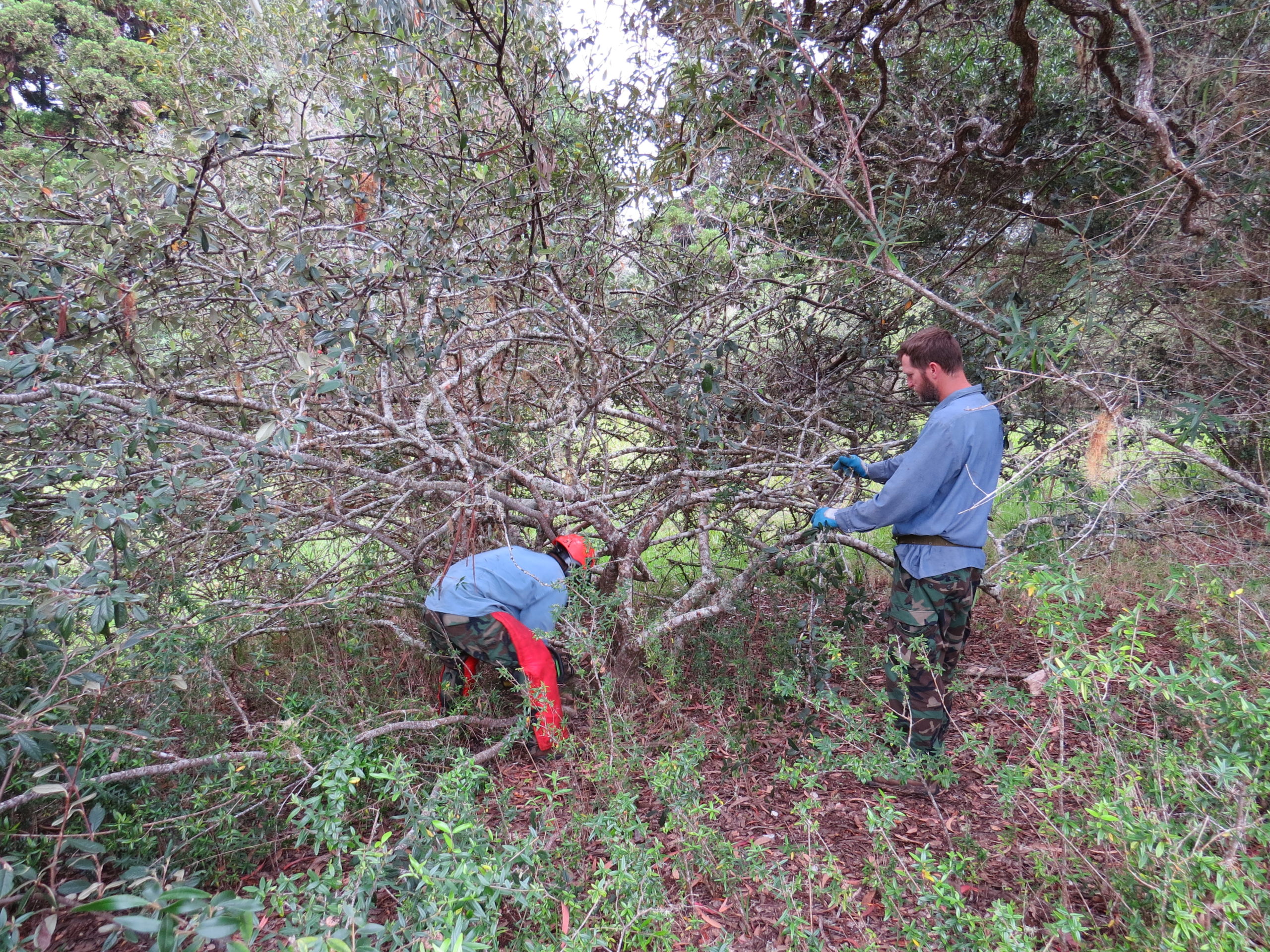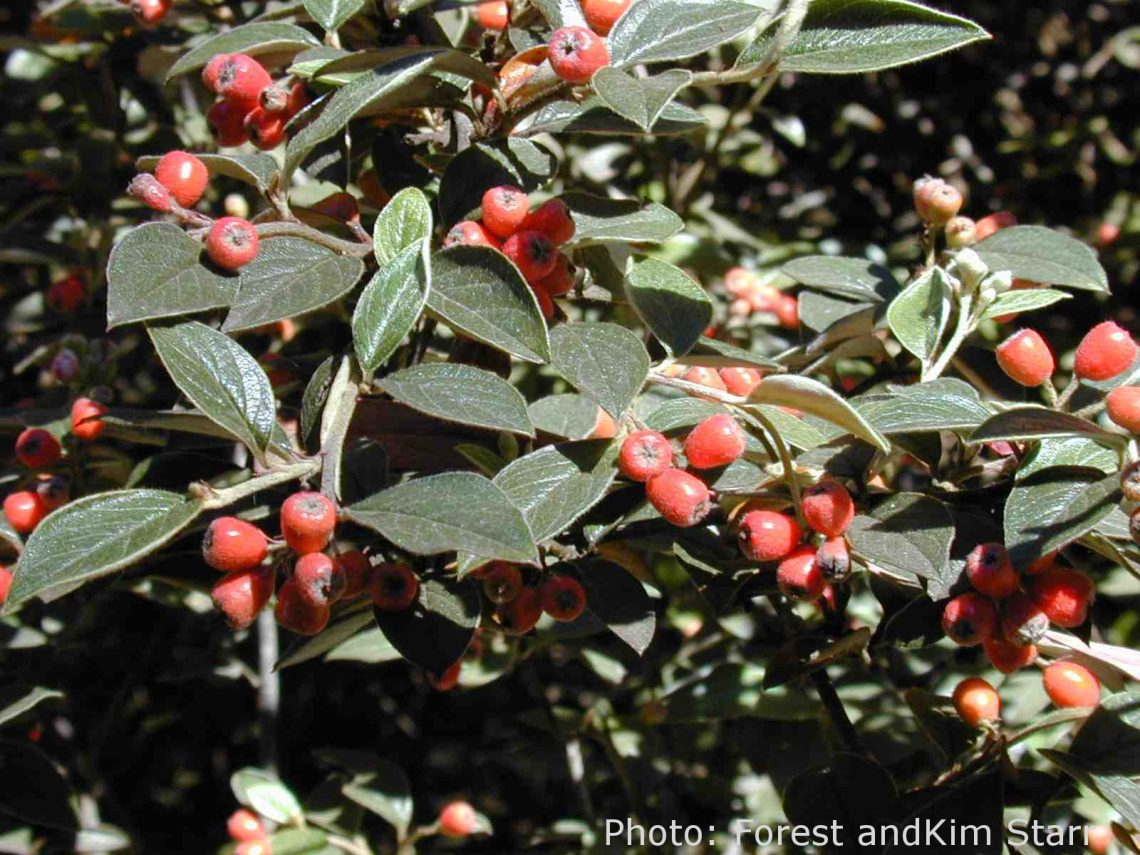
Cotoneaster
REPORT IF SEEN: Contact BIISC to schedule a free removal
Introduced to Hawai’i as an ornamental, Cotoneaster (Cotoneaster pannosus) is listed as one of Hawai‛i’s Most Invasive Horticultural Plants. Historical plantings around the Kilauea Military Reserve have spread to inaccessible locations within Hawai‛i Volcanoes National Park, the sheer cliff below the Volcano House is one example. Cotoneaster forms dense stands that shade out and outcompetes with native biodiversity. Despite these impacts, plants are still being grown on properties close to protected conservation areas, a risky move because the fruit is readily eaten and dispersed by birds. Its broad climate suitability, toleration of many soil types, and ability to self-fertilize are some of the characteristics that this species invasive.
Impacts:
- Fast growth to reproductive age
- Invades native dominated forests
- Self-compatible/self-fertile
- Outcompetes native biota
- Resprouts after being cut
- Fruit is attractive to birds
- Poisonous to humans
- Invades pastures
- Threat to cooler climates in places like Volcano and Kulani
Description:
- A multistemmed woody shrub with arching branches that can grow 10 feet tall
- White flowers are five-petaled, topped with purple anthers, and are born in clusters of 6 to 20 flowers
- Leaves are silver-green, oblong, leathery in texture, with matted white hair on the underside
- Dull red fruit is egg or rounded and contains 1 to 2 viable seeds
Cotoneaster (Cotoneaster pannosus)
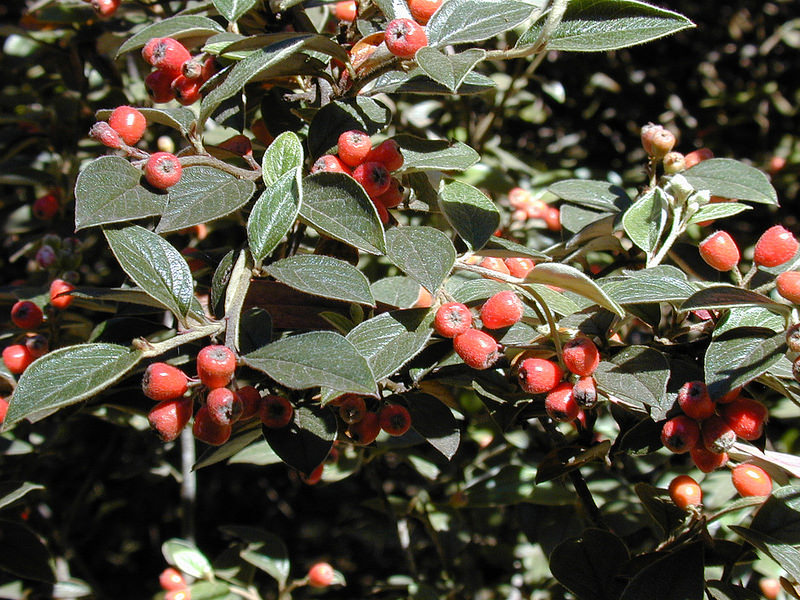
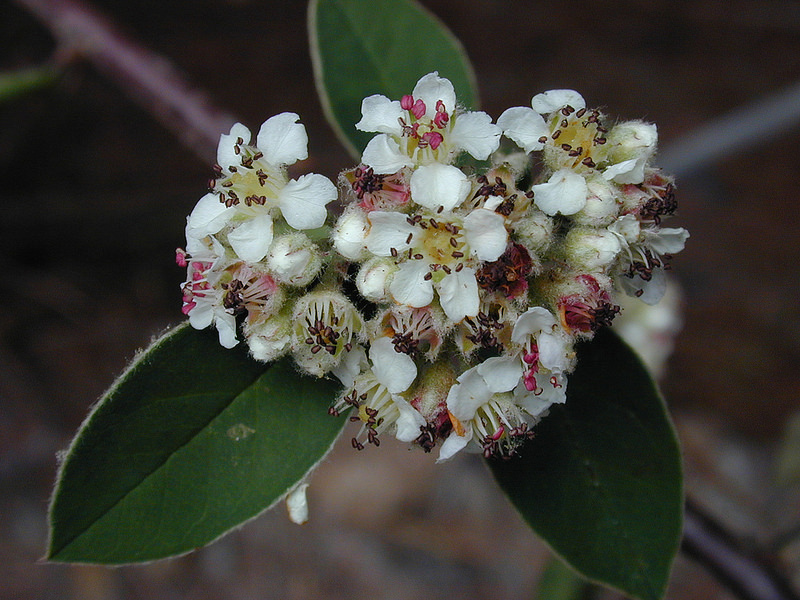
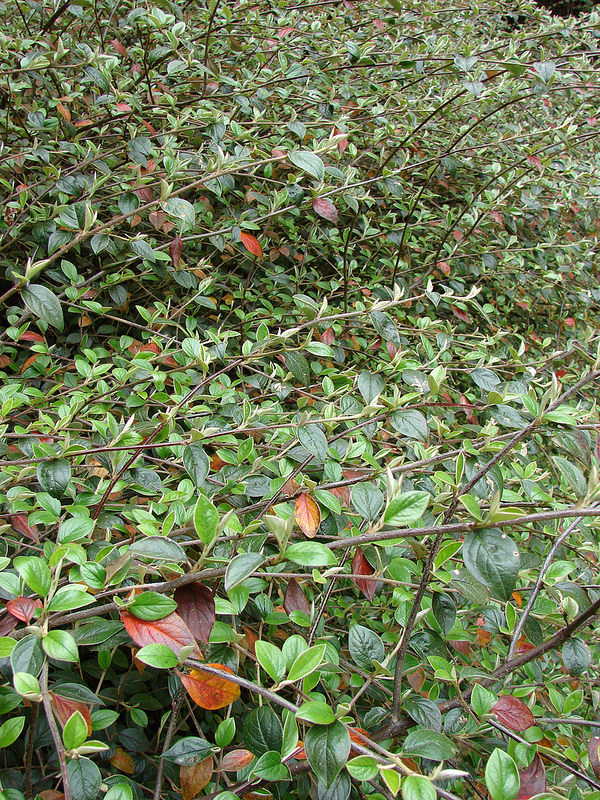
Photos: Forest & Kim Starr
BIISC’s Control Efforts
Our team is always on the lookout for cotoneaster. Small seedlings are removed by hand while larger infestations require physical removal of the aboveground material followed by a cut-stump treatment.
